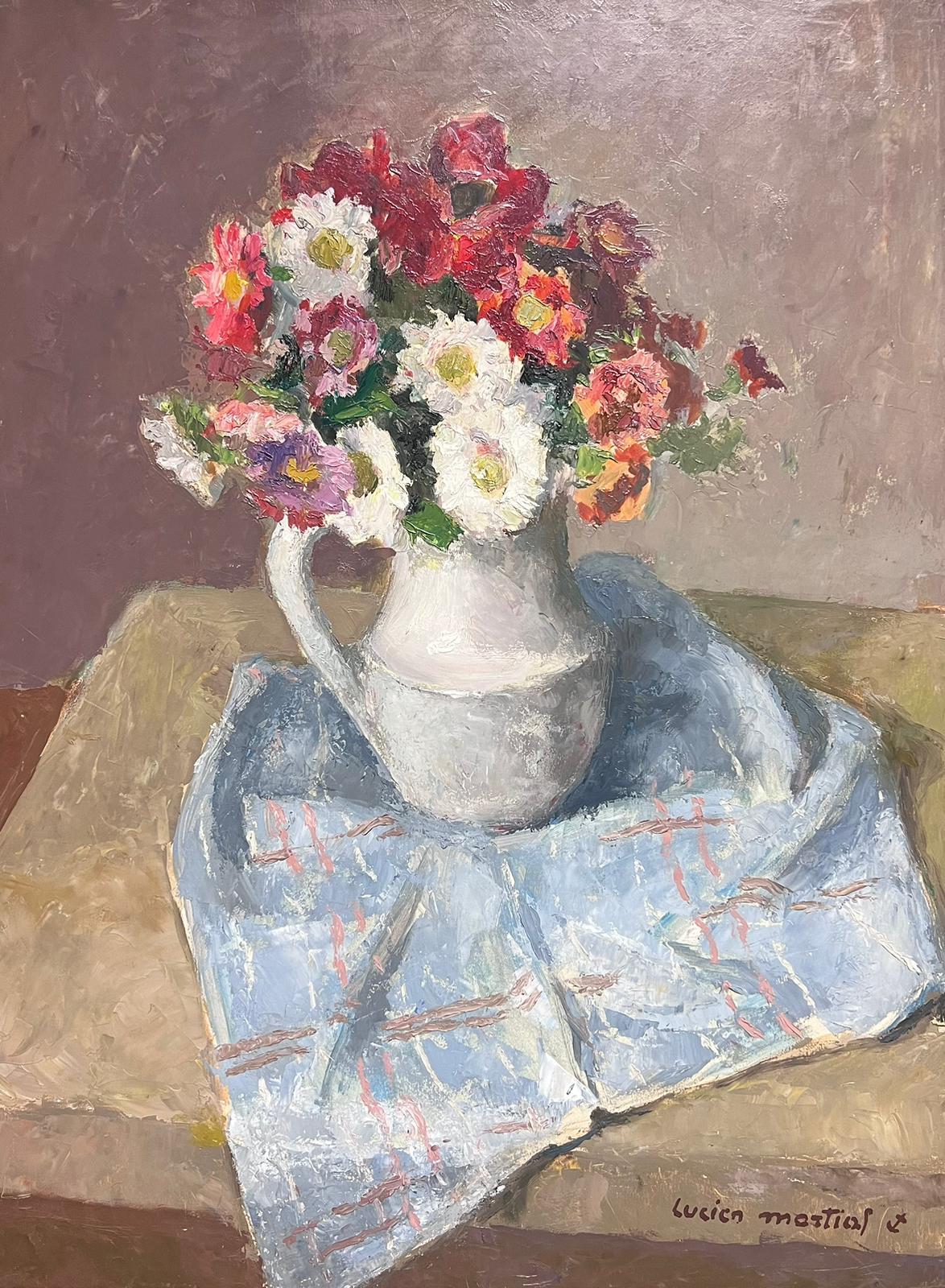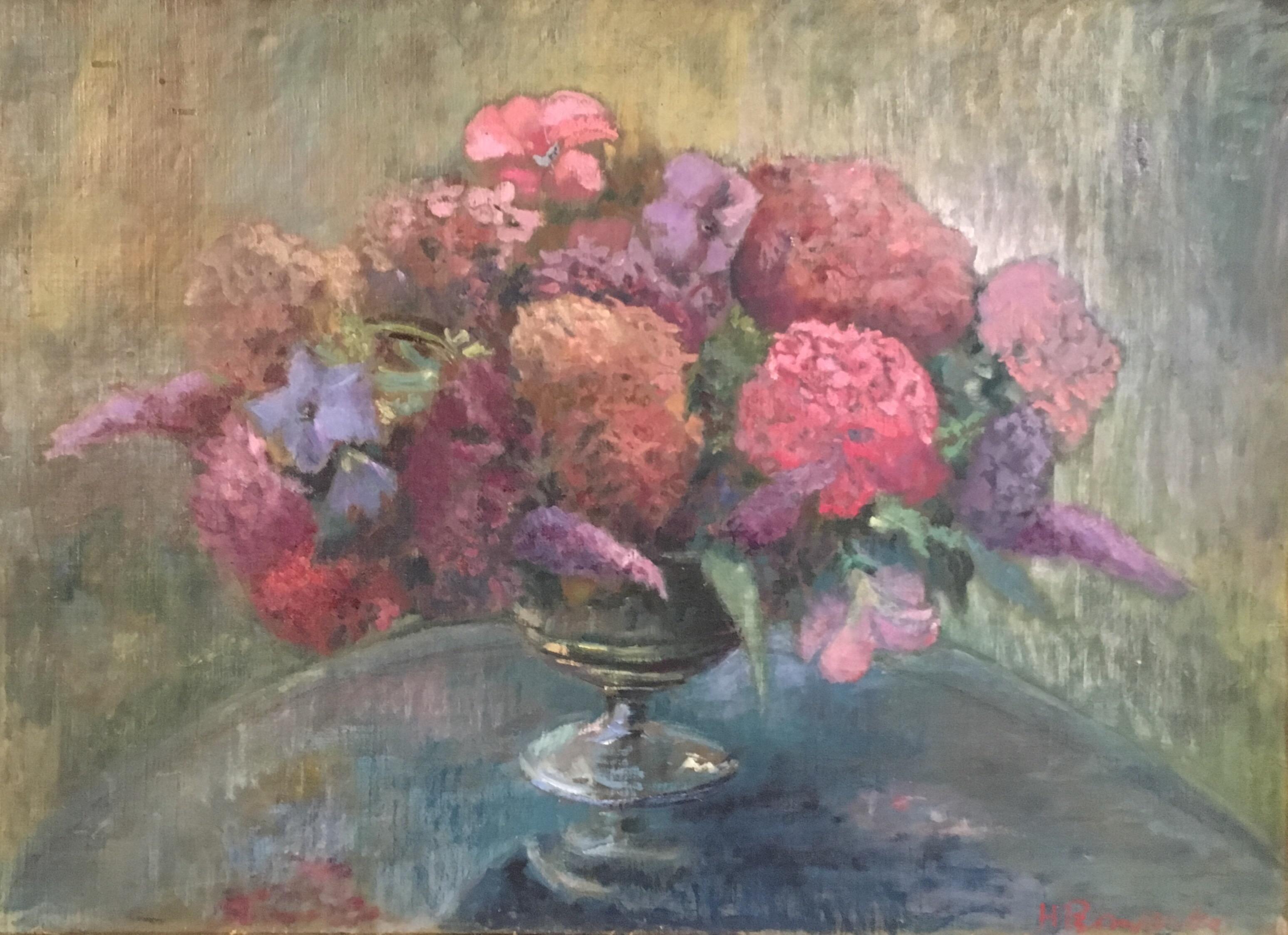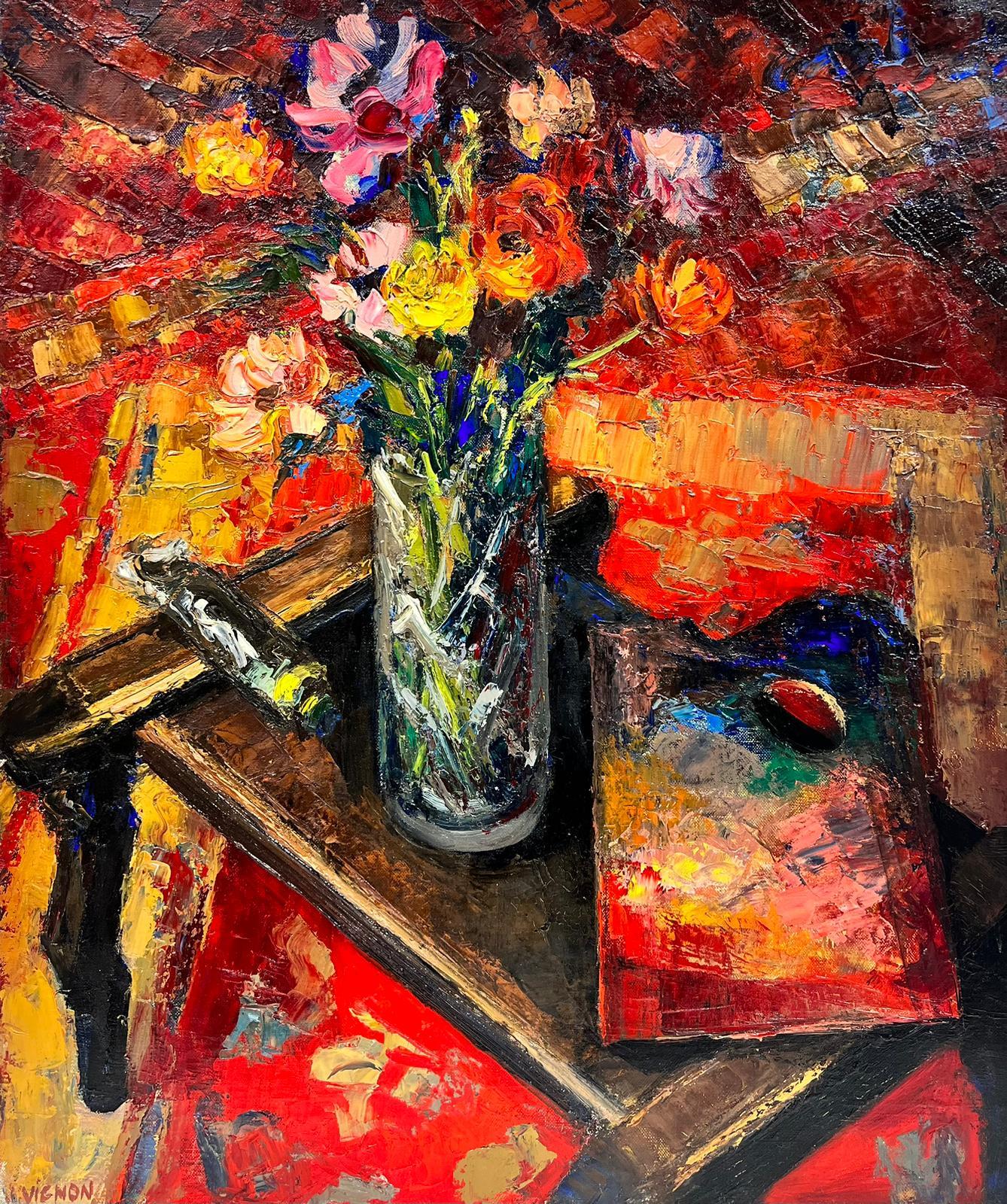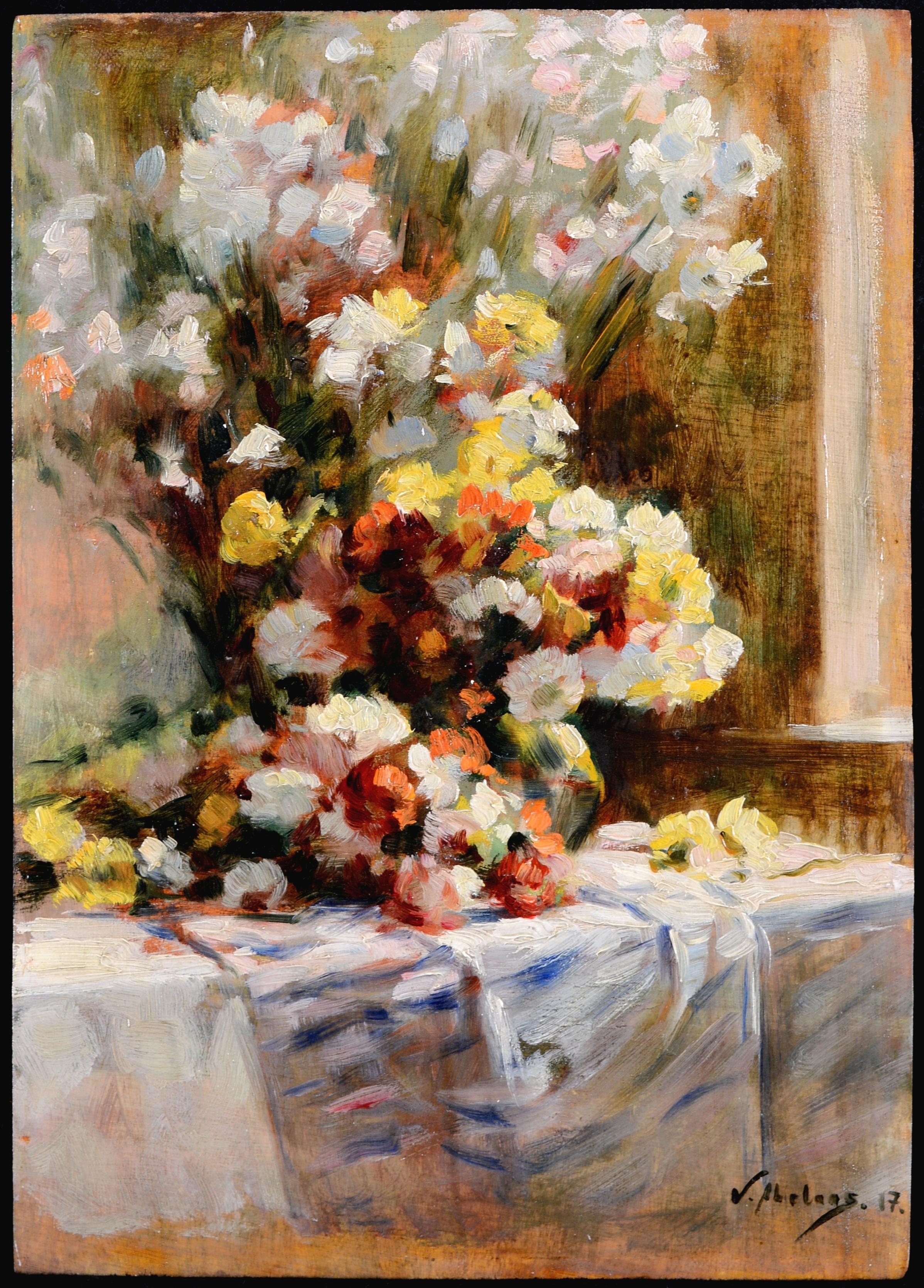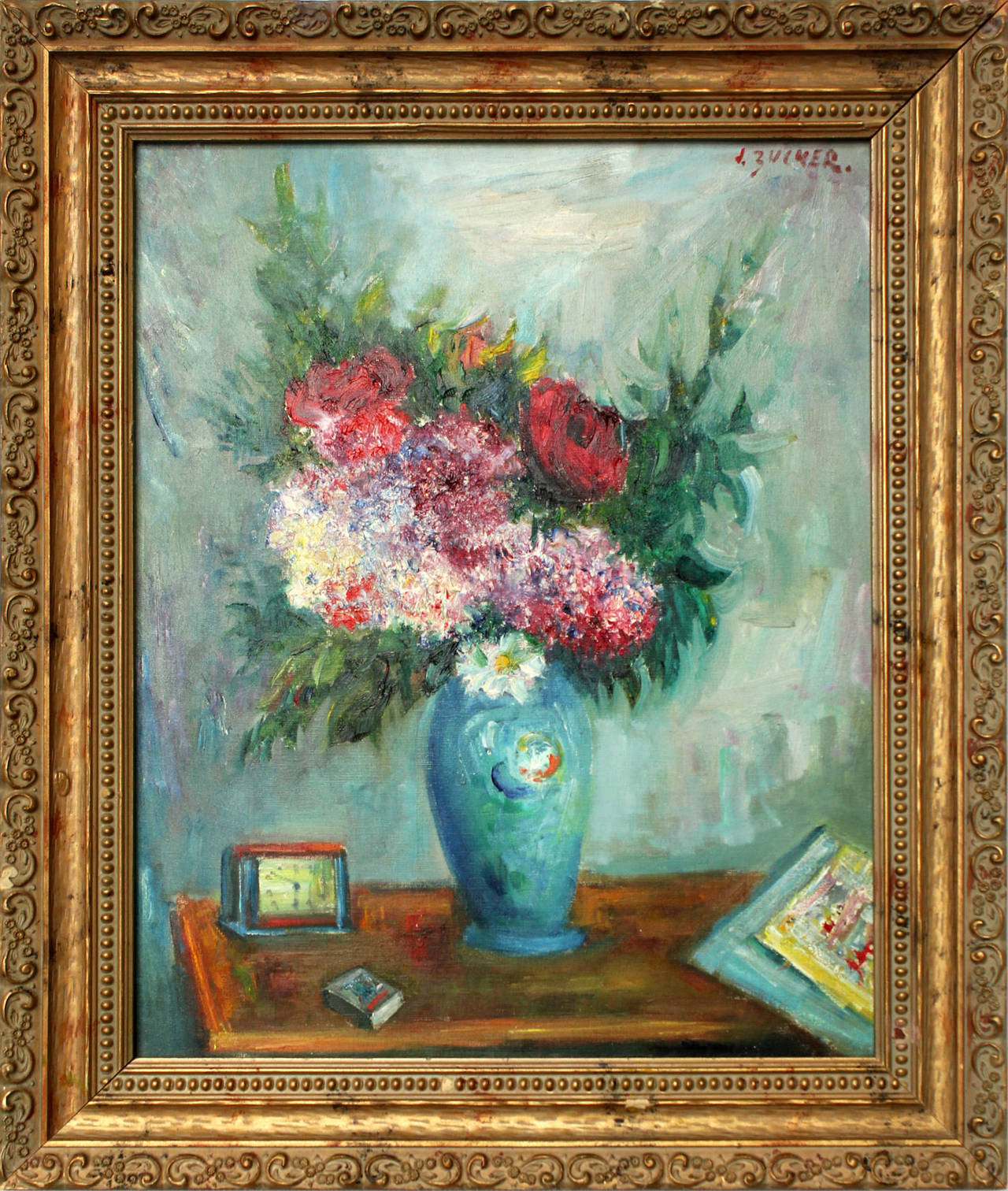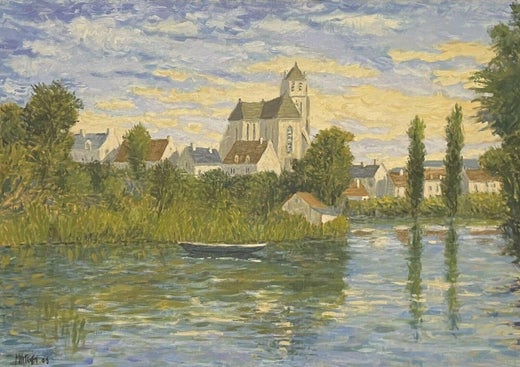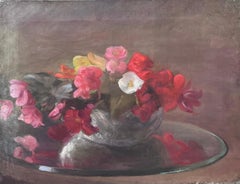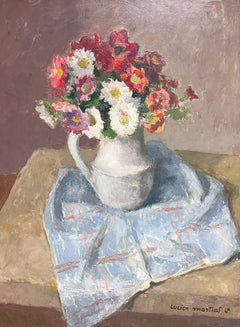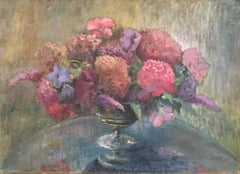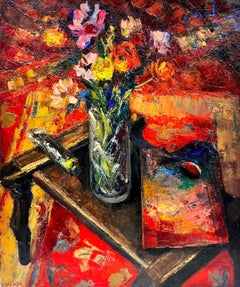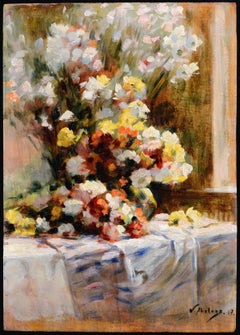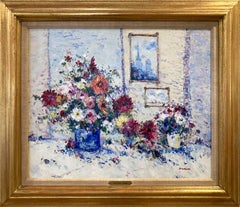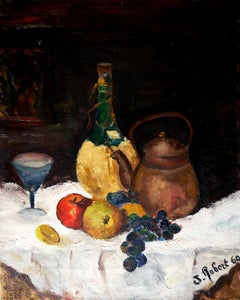Items Similar to Beautiful French Impressionist Signed Oil - The Gardeners Table Still Life
Want more images or videos?
Request additional images or videos from the seller
1 of 10
French SchoolBeautiful French Impressionist Signed Oil - The Gardeners Table Still Life
$1,615.79
£1,200
€1,415.06
CA$2,238.46
A$2,510.58
CHF 1,314.75
MX$30,506.05
NOK 16,695.18
SEK 15,828.20
DKK 10,562.68
About the Item
Artist/ School: French School, indistinctly signed and dated.
Title: The Gardeners Table, beautiful French Impressionist still life flower painting with old straw hat and secateurs.
Medium: signed oil painting on canvas, framed.
framed: 34.5 x 28 inches
canvas: 32 x 25.5 inches
Provenance: private collection, France
Condition: The painting is in overall very good and sound condition.
- Creator:French School (1900 - 1973, French)
- Dimensions:Height: 34.5 in (87.63 cm)Width: 28 in (71.12 cm)Depth: 1 in (2.54 cm)
- Medium:
- Movement & Style:
- Period:
- Condition:
- Gallery Location:Cirencester, GB
- Reference Number:1stDibs: LU509310183002
Henri Therme was born on May 28 1900 in Le Creusot from an old Burgundian family. He lived in Paris from his childhood. His parents destined him for the profession of engineer, but very early on, he truned to painting. He abandoned his engineering studies to devote himself entirely to the arts in 1925. He entered the Beaux-Arts in Paris, then the Academy of Montmartre under the tuition of Yvan Cerf, Jean Puy and Charles Camoin. Yvan Cerf instilled in him a taste for geometry and architecture, which will cause the artist to fall in love with the theories and the fragmented universe of Cubism. He was president of the Society of Friends of the Arts of Yonne, a member of the editorial board of the publication Le Peintre, the collector's guide, and editor for many years of a section devoted to the arts in the daily L'Yonne republican and the newspaper Terres Latines. He was also an editor for the artistic and literary magazine Le Groupe.
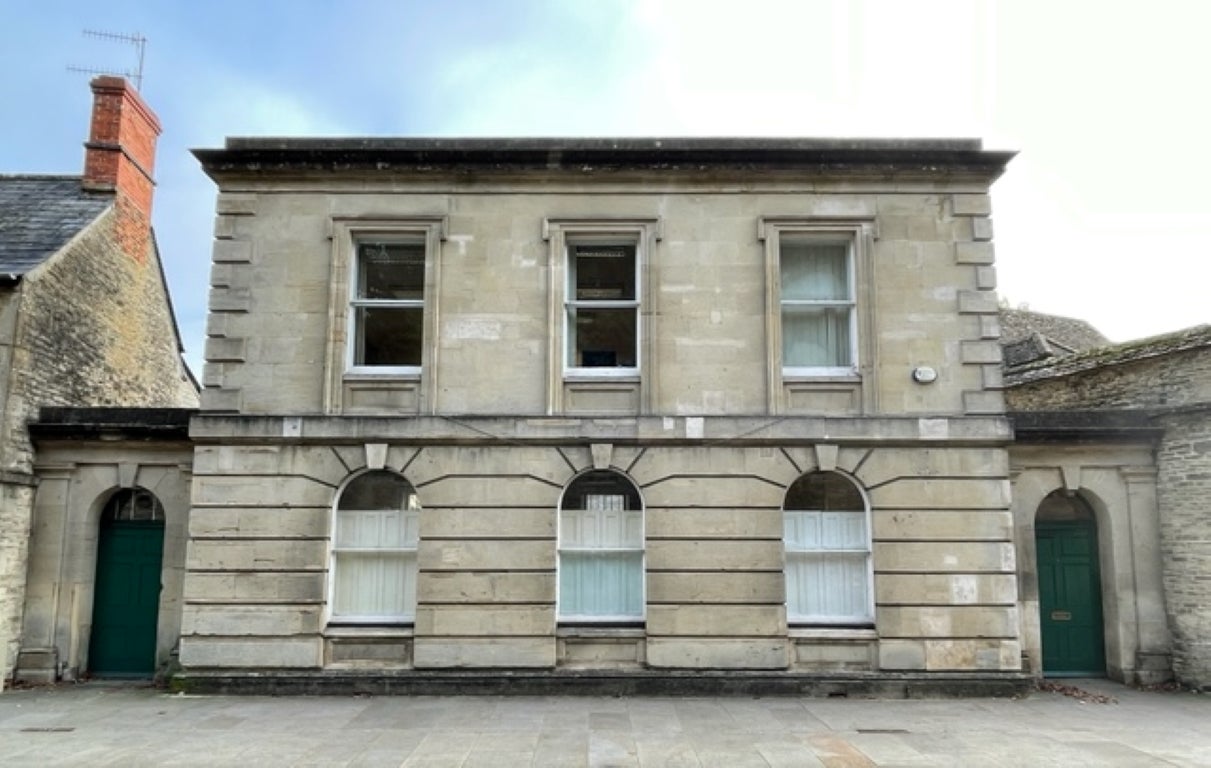
About the Seller
5.0
Platinum Seller
Premium sellers with a 4.7+ rating and 24-hour response times
Established in 1989
1stDibs seller since 2016
4,653 sales on 1stDibs
Typical response time: 1 hour
- ShippingRetrieving quote...Shipping from: Cirencester, United Kingdom
- Return Policy
Authenticity Guarantee
In the unlikely event there’s an issue with an item’s authenticity, contact us within 1 year for a full refund. DetailsMoney-Back Guarantee
If your item is not as described, is damaged in transit, or does not arrive, contact us within 7 days for a full refund. Details24-Hour Cancellation
You have a 24-hour grace period in which to reconsider your purchase, with no questions asked.Vetted Professional Sellers
Our world-class sellers must adhere to strict standards for service and quality, maintaining the integrity of our listings.Price-Match Guarantee
If you find that a seller listed the same item for a lower price elsewhere, we’ll match it.Trusted Global Delivery
Our best-in-class carrier network provides specialized shipping options worldwide, including custom delivery.More From This Seller
View All1900's French Impressionist Oil on Canvas Pretty Flowers Still Life Natural
Located in Cirencester, Gloucestershire
Still Life of Flowers
French Impressionist, circa 1900's
oil on canvas, unframed
canvas: 20 x 25.5 inches
Provenance: private collection, Paris
Condition: very good condition
For m...
Category
Early 1900s Impressionist Still-life Paintings
Materials
Oil, Canvas
French Vibrant Floral Still Life in Jug Mid-20th Century Oil Painting
Located in Cirencester, Gloucestershire
Vibrant Still Life
Lucien Mostiar
signed oil on canvas, unframed
board: 25.5 x 20 inches
provenance: private collection
condition: very good and sound condition
Description:
This c...
Category
Mid-20th Century Impressionist Still-life Paintings
Materials
Oil
Floral Still life, English Impressionist Oil Painting, Signed
Located in Cirencester, Gloucestershire
Floral Still life, Fine Impressionist Oil Painting, Signed
By British artist, 20th century
Signed and dated by the artist on the lower right hand corner
Oil painting on canvas, frame...
Category
Mid-20th Century Impressionist Still-life Paintings
Materials
Oil
1960's French Post Impressionist Still Life Oil Flowers & Artists Palette
By Josine Vignon
Located in Cirencester, Gloucestershire
Still Life
by Josine Vignon (French 1922-2022)
signed on front and back
inscribed verso
oil painting on canvas, unframed
canvas: 21.5 x 18 inches
Colors: Red colors, brown , yellow...
Category
Mid-20th Century Post-Impressionist Still-life Paintings
Materials
Canvas, Oil
Antique French Still Life of Flowers in Vase Signed Oil Painting on Canvas
Located in Cirencester, Gloucestershire
Classical Still Life of Flowers in a Vase
Attributed to Edouard Charton (French, born 1855)
signed oil on canvas, unframed
canvas: 22 x 18 inches
provenance: private collection, Fran...
Category
Early 20th Century French School Still-life Paintings
Materials
Oil
'Le Bouquet' French Floral Still Life, Flower Oil Painting
Located in Cirencester, Gloucestershire
'Le Bouquet' Floral Still Life, Flower Oil Painting
French School, mid 20th Century
Oil painting on canvas, framed
Framed size: 29 x 18 inches
Beautiful oil painting of a lovingly c...
Category
Mid-20th Century Impressionist Still-life Paintings
Materials
Oil
You May Also Like
Flowers on a Table - Antique Belgian Impressionist Still Life Oil Painting
By Victor Abeloos
Located in Sevenoaks, GB
* No US duty or taxes to pay on this item *
A beautiful signed and dated 1917 oil on panel still life depicting flowers on a table, by Belgian painter Victor Abeloos.
Excellent qua...
Category
1910s Impressionist Still-life Paintings
Materials
Oil, Panel
Still life of Flowers on Table
By Jacques Zucker
Located in New York, NY
Jacques Zucker was a prolific artist whose works are exhibited in Museums and galleries around the world. Being heavily influenced by artist such as Soutine, Chagall, and Renoir, we ...
Category
20th Century Impressionist Still-life Paintings
Materials
Canvas, Oil
$3,600 Sale Price
28% Off
"Les Dalhias du Jardin" Parisian Impressionist Still Life Oil Painting on Canvas
By Jean-Pierre Dubord
Located in New York, NY
This stunning piece of art titled "Les Dalhias du Jardin" is a captivating original work by renowned artist Jean-Pierre Dubord capturing a floral arrangement over the table with fres...
Category
20th Century Post-Impressionist Still-life Paintings
Materials
Canvas, Oil
French school Still Life Oil painting Signed
Located in Zofingen, AG
➡️Still Life from J Robert⬅️
🟢Jacques Robert (1921–1997) was a French writer, journalist, and screenwriter. Born on June 27, 1921, in Lyon, France, he began his career in journalis...
Category
Early 20th Century Tonalist Figurative Paintings
Materials
Gesso, Oil, Stretcher Bars, Canvas, Linen
$396 Sale Price
75% Off
Nature Morte - Post Impressionist Still Life Oil Painting by Georges D'Espagnat
By Georges d'Espagnat
Located in Marlow, Buckinghamshire
Signed oil on canvas still life circa 1910 by French post impressionist painter Georges D'Espagnat. The work depicts three ceramic vases of flowers on a table. There is a tale green ...
Category
1910s Post-Impressionist Still-life Paintings
Materials
Canvas, Oil
Sur La Table by Nancy Franke, Impressionist Still Life Painting
By Nancy Franke
Located in Atlanta, GA
Franke focuses on still life and figurative paintings, although she has also done some wonderful landscapes and pet portraits as well. With the looseness and spontaneity of her techn...
Category
21st Century and Contemporary Impressionist Still-life Paintings
Materials
Linen, Acrylic
More Ways To Browse
Straw Hats With Flowers
Flower And Bird Painting
Painting Of Pots
Flower Paintings Framed Large
Oil Canvas Fruit Painting
Orange Flower Painting
Art Painting Flowers Purple
Framed Shell Art
White Painting Black Flowers
Fruit Still Life Paintings
Mid Century Oil Painting Flower
Pink Flowers Oil Painting
Expressionist Oil Still Life
Dutch Still Life Paintings In Oil
French Fruit Art
Oil Painting Still Life Orange
Realism Paintings Of Flowers
Impressionist Roses

